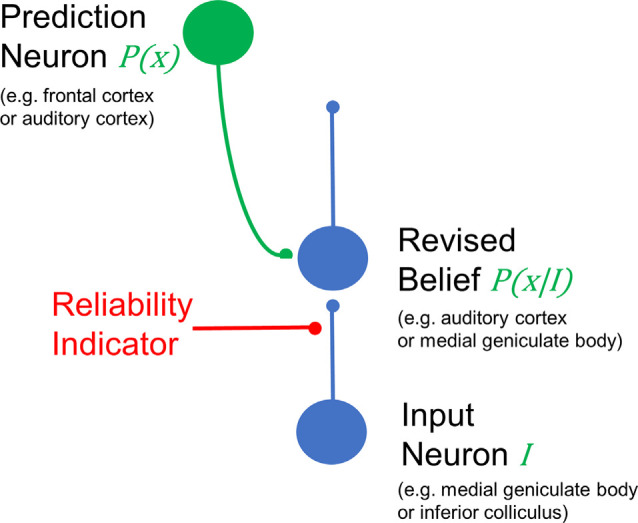Figure 3.

Generic example of the simplest circuit to involve top-down modulation to implement Bayesian predictive coding. A top-down projection (in green) carries the predictive signal [P(x)] from Figure 2. Such a signal could be derived, for example, from the frontal cortex or auditory cortex. This descending input is combined with weighted information from the periphery (represented as I) at an intermediate structure, such as the auditory cortex or medial geniculate body, using the examples provided above. Using this same scheme, I would be derived from the medial geniculate body or inferior colliculus. The weighting is determined by the reliability of the signal, conceived as a presynaptic input onto the input terminals. Neurophysiologically, this reliability signal could be represented by cholinergic or monoaminergic inputs that scale with arousal or attention. Note that this generic model is not limited to the structures listed on the figure, which are given as examples.
